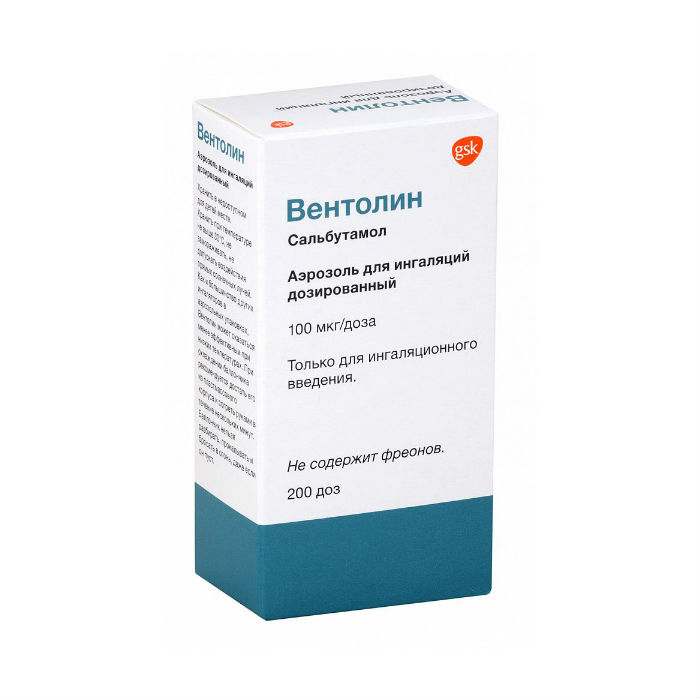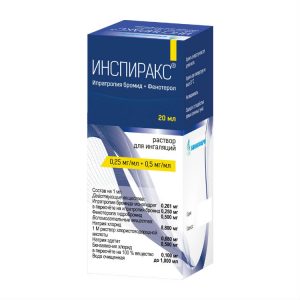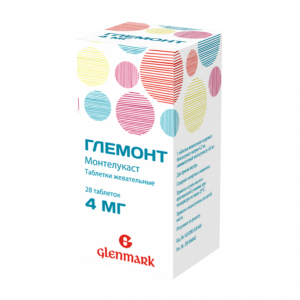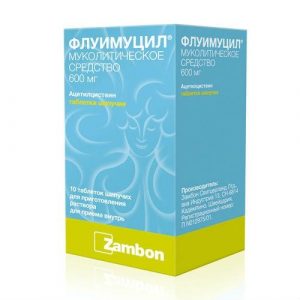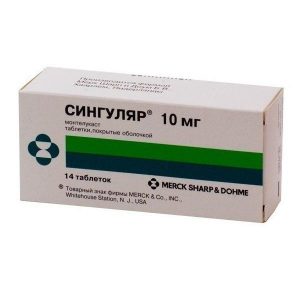Description
Latin name
Ventolin
Release form
Metered-dose aerosol for inhalation.
Packing
Cylinder 200 doses.
Pharmacological action of
Salbutamol is a selective b2-adrenoreceptor agonist.
In therapeutic doses, it acts on the b2-adrenergic receptors of the smooth muscles of the bronchi, having little or no effect on the b1-adrenergic receptors of the myocardium.
Indications
Bronchial asthma
– relief of bronchial asthma attacks, including with exacerbation of severe bronchial asthma
– prevention of bronchospasm attacks, associated with exposure to an allergen or caused by exercise
– use as one of the components in long-term maintenance therapy of bronchial asthma.
Chronic obstructive pulmonary disease (COPD), accompanied by reversible airway obstruction, including chronic bronchitis and pulmonary emphysema.
Contraindications
– Hypersensitivity to any component of the drug.
– Management of premature birth.
– Threatening abortion.
– Children under 2 years old.
Use during pregnancy and lactation
During pregnancy and lactation, the drug is prescribed only in cases where the expected benefit to the mother outweighs any possible risk to the fetus.
Salbutamol is likely to pass into breast milk, therefore it is not recommended for nursing women to take it, unless the expected benefit to the mother outweighs any potential risk to the baby.
It is not known whether salbutamol present in breast milk has any negative effect on a newborn.
Composition
1 dose contains 100 micrograms of salbutamol (in the form of salbutamol sulfate).
Dosage and administration
Ventolin metered-dose aerosol is intended for inhaled administration only.
Only a doctor can resolve the issue of increasing the dose or frequency of use of the drug.
It is not recommended to use the Ventolin inhaler more than 4 times a day. The need for frequent use of maximum doses of Ventolin or for a sudden increase in dose indicates a worsening of the course of the disease.
Adults (including elderly patients)
Relief of an attack of bronchospasm: the recommended dose is 100-200 mcg (1-2 inhalations).
Prevention of bronchospasm attacks associated with exposure to an allergen or caused by physical exertion: the recommended dose is 200 mcg (2 inhalations) 10-15 minutes before exposure to a provoking factor.
Long-term maintenance therapy: the recommended dose is up to 200 mcg (2 inhalations) 4 times a day.
Ventolin can be entered through the volumetric spacer.
Children
Relief of an attack of bronchospasm: the recommended dose is 100-200 mcg (1-2 inhalations).
Prevention of attacks of bronchospasm, associated with exposure to an allergen or caused by physical exertion: the recommended dose is 100-200 mcg (1-2 inhalations) 10-15 minutes before exposure to a provoking factor.
Long-term maintenance therapy: the recommended dose is up to 200 mcg (2 inhalations) 4 times a day.
Ventolin can be entered through the spacer ‘Babyihaler’ or ‘Volumatic’.
Side effects
Salbutamol may cause slight skeletal muscle tremors, which is usually most pronounced in the hands and is a characteristic side effect of all b2-adrenergic agonists. Occasionally, patients experience headache, peripheral vasodilation, and a slight compensatory increase in heart rate. Very rarely, hypersensitivity reactions develop (including angioedema, urticaria, bronchospasm, arterial hypotension and collapse), muscle cramps, tachycardia.
Inhaled medications can cause paradoxical bronchospasm. Paradoxical bronchospasm must be immediately stopped using another dosage form of salbutamol or another fast-acting inhaled bronchodilator. You should immediately stop using the Ventolin inhaler, assess the condition of the patient, conduct the necessary examination and prescribe appropriate therapy.
Inhalation may cause irritation of the oral mucosa and pharynx.
Beta2-adrenoreceptor agonist therapy sometimes causes hypokalemia, which can be a serious risk to the patient.
Like other beta2-adrenergic agonists, salbutamol can occasionally cause mental agitation and increased motor activity in children.
In patients with a predisposition to develop arrhythmias, salbutamol can cause cardiac arrhythmias, including atrial fibrillation, supraventricular tachycardia, and extrasystole.
Drug Interaction
It is not recommended to use salbutamol and nonselective b-adrenoceptor blockers, such as propranolol, simultaneously.
Salbutamol is not contraindicated in patients receiving monoamine oxidase (IMO) inhibitors.
Overdose
Cardioselective b-blockers are the best antidotes for an overdose of salbutamol.
However, b-adrenoceptor blockers should be used with caution in patients with a history of bronchospasm.
Using large doses of salbutamol can cause hypokalemia, therefore, serum potassium should be monitored for suspected overdose.
Storage conditions
Store at a temperature below 30 ° C.
Expiration
2 years.
Deystvuyuschee substances
Salbutamol
dosage form
dosage form
aerosol for inhalation
GlaxoSmithKline, UK
